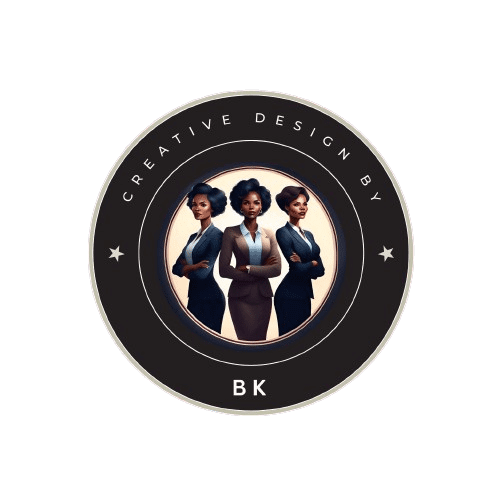- Discover the Exciting World of Lira Spin: A Comprehensive Guide
- Understanding the Basics of Lira Spin
- Essential Equipment for Lira Spin
- Key Techniques in Lira Spin
- Practice Routine for Beginners
- Benefits of Practicing Lira Spin
- Social Aspects of Lira Spin
- Challenges and Safety Tips
- Goals and Progression in Lira Spin
- Exploring Lira Spin Styles
- Incorporating Other Dance Forms
- Conclusion
Discover the Exciting World of Lira Spin: A Comprehensive Guide
Welcome to the fascinating realm of Lira spin, where elegance, strength, and creativity intertwine in a mesmerizing dance of movement and expression. This unique form of art combines the beauty of aerial acrobatics with the grace of dance, captivating audiences both in live performances and through stunning visuals. Lira spin, or hoop dance, features a hoop suspended from a rigging or held by the performer, allowing for a range of dynamic maneuvers and tricks. Through its intricate choreography, Lira spin not only showcases physical prowess but also tells a story, expressing emotions and themes that resonate deeply with viewers.
The history of Lira spin dates back to ancient times when it was primarily used in circus performances, but over the years, it has evolved into an artistic discipline that attracts practitioners from all walks of life. Today, this aerial art form exists in various styles and has found its place in contemporary performances, fitness regimes, and even wellness practices. In this comprehensive guide, we will delve into the origins of Lira spin, explore its various techniques and styles, and uncover tips for beginners and advanced practitioners alike.
As we embark on this exciting journey, we will not only highlight the physical aspects of Lira spin but also the mental and emotional benefits that come with mastering this graceful art. From increased body awareness to improved balance and flexibility, engaging in Lira spin can transform your understanding of physicality. Furthermore, this practice encourages self-expression and boosts confidence, serving not just as a workout but as a holistic experience.
Whether you are a curious beginner or an aspiring professional, this guide aims to provide a thorough understanding of the elements that make up the enchanting world of Lira spin. With knowledge, dedication, and practice, one can explore the depths of this art form, discovering not only individual strengths but also a community of fellow enthusiasts who share the same passion.
Let’s embark on this adventurous exploration of Lira spin, uncovering the techniques, potential, and artistic beauty ingrained within this captivating discipline.
Understanding the Basics of Lira Spin
To genuinely appreciate the artistry of Lira spin, it is crucial to understand its fundamental components. At its core, Lira spin involves a hoop that enables dynamic movement while suspended in the air. The performance includes various spins, poses, and transitions, requiring physical agility, core strength, and grace. Many practitioners start by getting comfortable with basic spins before progressing to advanced moves.
Moreover, strength and flexibility play significant roles in mastering Lira spin techniques. For those new to the art form, proper training is essential. Attending classes taught by experienced instructors can greatly enhance your learning curve and ensure safety while executing advanced maneuvers. Moreover, understanding the equipment is paramount. Different types of hoops are available, each designed to accommodate various styles and skill levels.
| Aerial Hoop | 1.5 kg | Ideal for beginners and aerial arts |
| Performance Hoop | 2 kg | Designed for advanced tricks |
| Prop Hoop | Varies | Used in choreography and stage performances |
Essential Equipment for Lira Spin
Choosing the right equipment is critical for anyone embarking on their journey in Lira spin. The hoop is the most crucial piece of equipment, and its selection depends on factors such as body size and skill level. Beginners are often advised to start with a wider hoop, as it provides better stability and control. More advanced practitioners might opt for a narrower hoop to execute complex tricks and spins.
Additionally, wearing the right attire can enhance the learning experience. It is recommended to wear fitted clothing that allows for freedom of movement while also preventing any fabric from getting caught in the hoop during maneuvers. Safety gear, such as crash mats, is equally vital for practicing advanced moves, as it helps prevent injuries when learning tricky aerial transitions.
Key Techniques in Lira Spin
The beauty of Lira spin lies within its vast array of techniques, which range from simple spins to intricate choreography. Beginners typically start with foundational spins such as the “front spin” and “back spin,” both of which are essential for developing the necessary skills. As practitioners grow more confident, they can explore a variety of poses and transitions, which lend their performances an artistic flair.
Beyond the basic spins, advanced techniques incorporate fluid transitions, such as moving from one spin into a pose. Incorporating breath and focusing on core engagement makes each trick not just a physical act but an expression of personal artistry. Learning to connect movements seamlessly is crucial for a captivating performance.
Practice Routine for Beginners
Creating a consistent practice routine is vital for mastering Lira spin. Beginners should dedicate time each week to work on their strength, flexibility, and technique. A well-rounded routine should focus on core exercises, stretching, and practicing spins. Here are some key components to include:
- Core Strength Training: Engage in exercises like planks and leg lifts to build a solid foundation.
- Flexibility Workouts: Incorporate stretches for hips, thighs, and shoulders every session.
- Hoop Skills Practice: Dedicate time specifically to practice various spins and moves.
Benefits of Practicing Lira Spin
Engaging in Lira spin offers a multitude of physical and mental benefits. Physically, it enhances strength, flexibility, and balance. The maneuvering and spinning require a full-body workout, targeting muscles across the core, arms, and legs. As a result, practitioners often notice improved physical fitness and endurance over time.
Additionally, the mental benefits of Lira spin can be quite profound. The practice encourages mindfulness through focus on body movements, which can help alleviate stress and anxiety. Many find that Lira spin fosters a greater connection between the body and mind, leading to improved self-esteem and confidence during performances.
Social Aspects of Lira Spin
The community surrounding Lira spin is another advantage to participating in this art form. Many practitioners find a sense of belonging among fellow enthusiasts, sharing tips, and learning from one another. Attending classes or workshops often leads to new friendships and supportive networks.
The camaraderie within the Lira spin community can enrich the overall experience. Highlights include group performances, collaborations, and social events that allow practitioners to showcase their skills. Connecting with others who share a similar passion makes the journey even more rewarding.
Challenges and Safety Tips
Despite its many advantages, Lira spin can pose challenges, especially for beginners. Common obstacles include mastering complex spins and dealing with the physical demands of the art form. It is essential to approach learning with patience and to give oneself time to develop skills progressively.
Safety is paramount when practicing Lira spin. Prioritize using safety gear during learning sessions and be aware of your surroundings. Here are some tips to enhance safety during practice:
- Use a Crash Mat: Matting helps cushion falls during practice and should be prioritized when learning new skills.
- Warm Up: Always warm up before starting your routine to prepare your body and minimize the risk of injury.
- Take Breaks: Allow your body to rest between challenging maneuvers to prevent overstretching or fatigue.
Goals and Progression in Lira Spin
Setting goals within Lira spin enhances the overall practice experience. Work towards specific milestones, whether it be mastering a new move or participating in a performance. These targets keep practitioners motivated and excited about their journey.
Additionally, tracking progress is essential to measure growth. Maintaining a journal or video record of skills learned can help identify strengths and areas needing improvement. Over time, consistent practice will lead to not only enhanced skills but a deeper appreciation for the art form.
Exploring Lira Spin Styles
The diversity within Lira spin is reflected in the various styles that practitioners adopt. Whether one prefers a contemporary approach, a classic circus style, or a fusion with other dance forms, the possibilities are virtually endless. Experimentation with different styles can lead to unique performances that resonate with personal expression.
Some of the popular styles include traditional circus Lira, which focuses on intricate tricks, and modern interpretations that incorporate contemporary dance elements. By exploring different techniques, dancers can find their voice and artistic identity within the realm of Lira spin.
Incorporating Other Dance Forms
Many Lira spin enthusiasts choose to complement their practice with other dance styles, such as ballet, contemporary, or even hip hop. Integrating diverse movements enhances the overall fluidity of performances and adds distinctive flair. Collaboration between various movements can create mesmerizing routines that captivate audiences.
Moreover, blending Lira spin with other forms of dance allows for increased creativity and innovation. As artists experiment with their work, they can develop their unique style, showcasing the beauty of Lira spin through diverse expressions. This further enriches their personal practice and performance journey.
Conclusion
In conclusion, Lira spin emerges as a captivating and multifaceted art form that combines strength, creativity, and emotional depth. Through this comprehensive guide, we have explored the basics, techniques, benefits, and styles associated with Lira spin. With practice, dedication, and a supportive community, anyone can embark on this enchanting journey. The beauty of Lira spin lies not just in the moves, but in the expression and connection it fosters, leaving a lasting impression on both performers and audiences alike.

